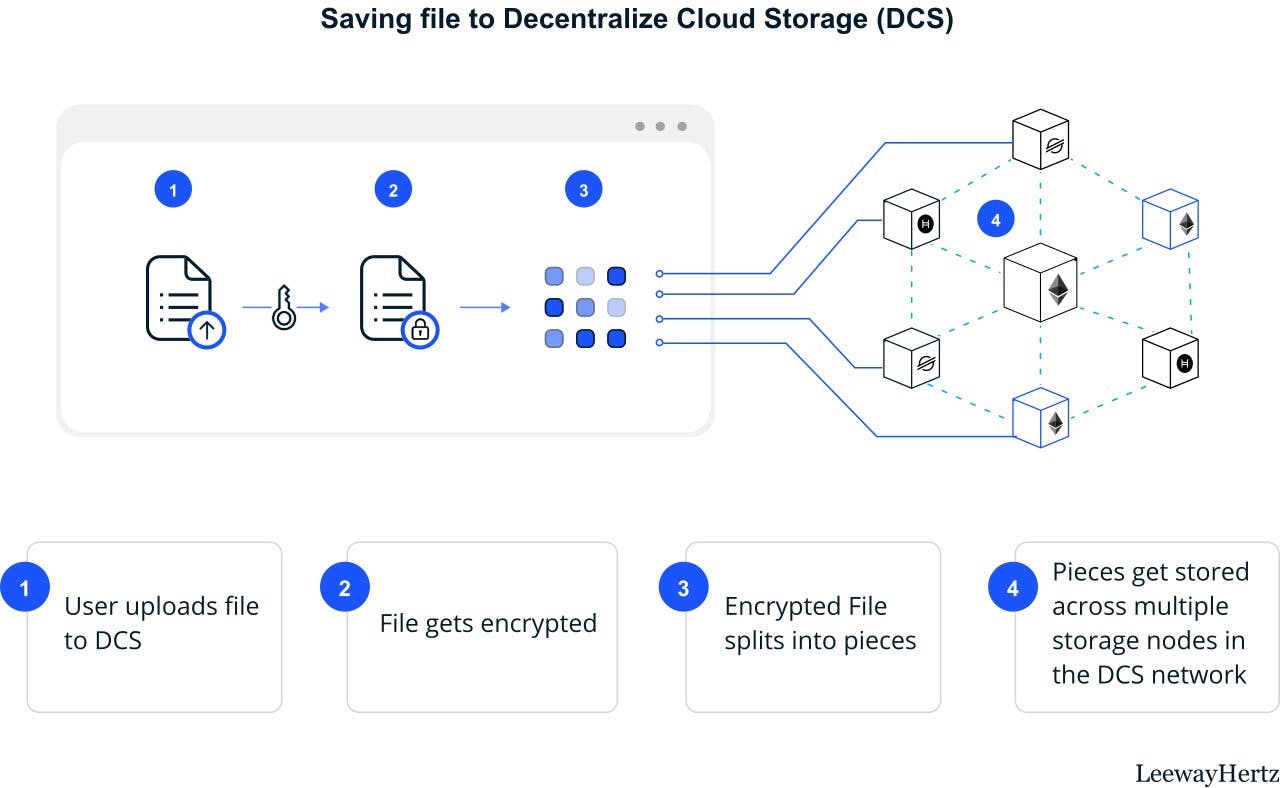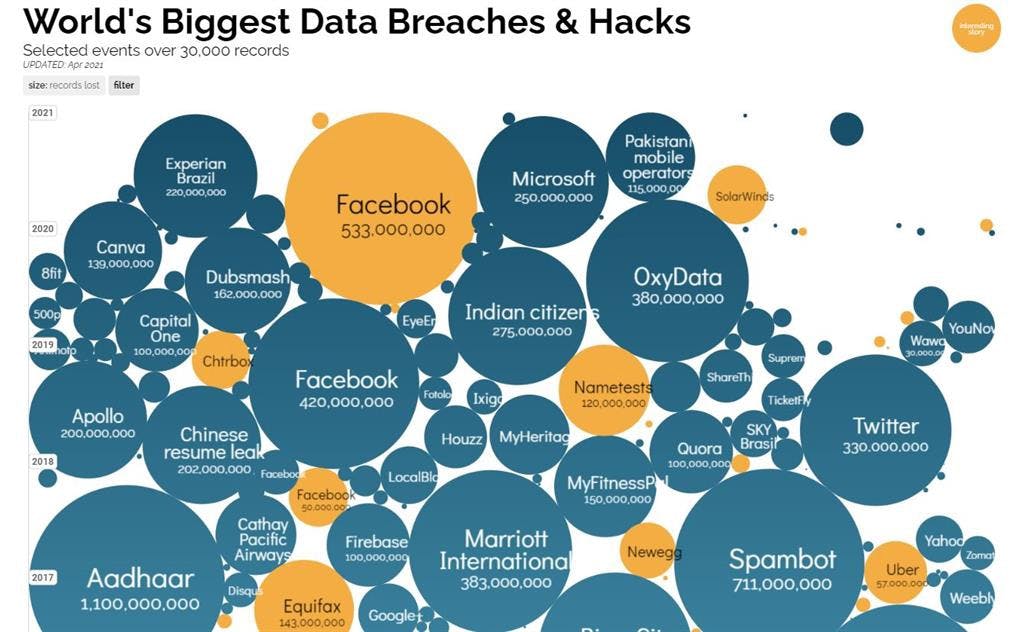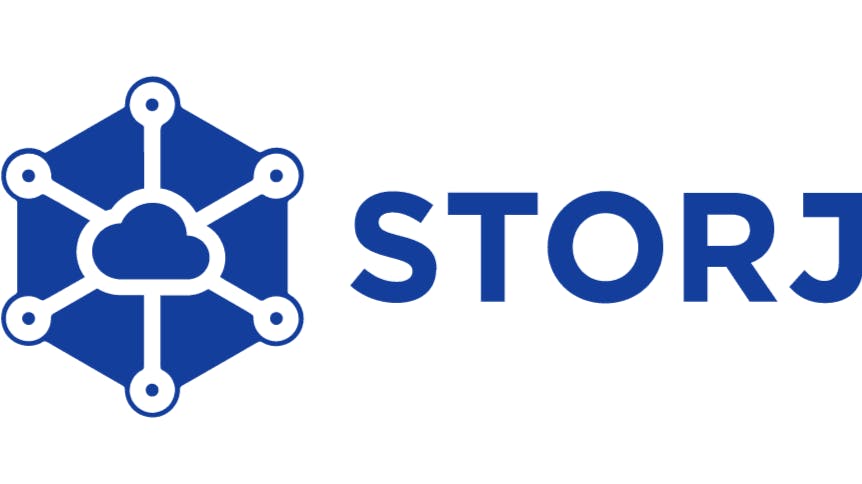Decentralized Storage Could Be Blockchain's Killer Application
Decentralized storage networks may be blockchain technology’s most important use-case yet.
The race to find blockchain technology’s killer app is on. Smart contracts, decentralized finance (DeFi), payments networks, non-fungible tokens (NFTs), blockchain-powered social networks are some of the most exciting use-cases coming out of the blockchain industry.
But there’s another blockchain use-case that’s (probably) more important than you think: decentralized storage.
The decentralized storage model protects the integrity, accessibility, and security of data by spreading the hosting of files across a peer-to-peer network. Centralized storage systems hold your data in large servers, but this can incur the risk of censorship, data loss, or information theft.
In this article, we explore how decentralized storage works and what benefits it offers. The article also gives a brief overview of popular decentralized storage projects.
What is Decentralized Storage?
Decentralized storage applications store data on a distributed network run by computers scattered across multiple locations. Nodes collectively store and secure data and are responsible for making files available to owners. For their efforts, nodes on a decentralized storage network are given incentives in form of tokens paid by users.
As is evident, decentralized storage solutions are free from control by a single entity. Instead, peer-to-peer (p2p) nodes sustain the network and keep it operational. Without centralized management, data storages eliminate single points of failure and reduce counterparty risk for users.
How Does Decentralized Storage Work?
Using centralized cloud storage requires uploading your file via the Internet to a server. And if you need it, you send a request to the same server.
Decentralized cloud storage uses a different mechanism for storing data. You still have to upload the data, and can request for it anytime, but how that data gets stored is significantly different from a centralized solution.
Encryption
Data uploaded to a decentralized storage network is automatically encrypted using cryptographic hash mechanisms. Your private key gives you access to the data and prevents non-authorized entities from decrypting the information.
Sharding
Files are split into little pieces and sent to different nodes on the network. Sharding ensures no single node holds the complete dataset, eliminating the problems of censorship and privacy intrusion. With bits of your data spread across the network, no one can read your information or restrict access.
Storage
Finally, the sharded bits of your file are sent to several nodes located in different geographical areas. If you need the file, the network retrieves the components from nodes storing it and reassembles it for you to download.
The Benefits of Decentralized Storage Networks
In 2006, British mathematician Clive Humby described data as "the new oil." The prescience of this statement is apparent later, as the growth of eCommerce, Web applications, and IoT/AI have spurred the creation of large amounts of data.
To extract value from data, enterprises invest considerable amounts into data storage and management. A company might decide to build bespoke data centers or rely on cloud storage services provided by Google Drive, DropBox, and Amazon Web Services (AWS).
However, centralized storage of information presents teething problems. Large databases are susceptible to malicious attacks, with hacks resulting in losses every year. And because the information is stored in an external server, owners lose control—they cannot access it if the service provider goes offline or restricts access.
These are just some of the problems that decentralized storage networks were designed to solve. By sharing storage responsibilities among different participants, decentralized storage services provide a robust and secure method of storing information.
Data Security
In today's digital economy, data security is more important than ever. Poor data storage systems often lead to data breaches, identity theft and other problems, which are costly for both companies and users.
Centralized storage services promised to fix data storage problems, but have failed to live up to this promise. For example, a hack on Dropbox—one of the world's largest cloud storage companies—led to 68 million passwords getting leaked on the dark web.
Decentralized, peer-to-peer networks are theoretically safer compared to their centralized networks. That's what makes them ideal for protecting important data from malicious actors.
To attack a decentralized storage service, hackers need to access every node running the protocol. The enormous costs required to pull off this exploit are often enough to discourage hackers from trying to steal your information.
Privacy
If it wasn't obvious already, storing sensitive information on a company's server breeds privacy violations of immense proportions. Even if the company encrypts information, the encryption key is still stored on a server. Savvy hackers can steal the encryption keys and access your private information.
Decentralized storage fixes this problem. Data files are split into different bits to protect them from unauthorized viewing. To recreate the file, these bits must be assembled—which is impossible to do without a private key or appropriate permissions.
Efficiency
On the surface, centralized cloud storage seems efficient. You can easily retrieve files from your Google Drive or Dropbox folder by logging into your account. But a closer look reveals the potential inefficiencies with such centralized data storage and management.
Your information is stored in a handful of data centers around the world. If these systems get knocked offline for any reason, accessing information becomes impossible. A distributed denial-of-service (DDoS) attack is enough to crash seemingly robust networks and block users from using centralized servers.
Since data centers may be clustered in certain areas, users in far-flung corners of the world may find it difficult to retrieve information. They may need to expend more bandwidth just to download information stored on a cloud storage platform.
Decentralized storage services operate on a robust p2p architecture where multiple nodes distributed across different locations hold copies of a file. Even if a few nodes go offline, your information would still be available. These systems are fault-tolerant, so a few nodes malfunctioning cannot affect their operation.
Blockchain-powered storage can theoretically reduce bandwidth usage. The servers storing your files are distributed across the world, and there's the possibility of finding a server close to your region. This makes downloading files easier and shrinks bandwidth usage.
Data Integrity
Data integrity is a concept that refers to the ability of data to retain its qualities throughout an entire lifecycle. In other words, files should remain accessible in their original form five, ten, twenty years from now.
Data integrity is difficult to implement with centralized storage systems. This is mainly because traditional storage applies a location-specific approach to storing information.
Say you need to access a particular webpage on this site. You could get it by putting a link to the file path in your browser. Here’s what that link could look like:
businesstechguides.co/series/blockchain
This link points to where the webpage (i.e., the file) is hosted. When you enter the link on a search engine, you’re requesting the data from whatever server (computer) holds it. If the file is in its original location, you should get the webpage.
But what if something happens to the particular server holding the file or the webpage itself gets moved to another location? The data simply becomes unavailable. If you’ve ever encountered a “dead link” (Error 404), it’s because the content you requested no longer exists in that location.
To remedy the problem of data persistence and integrity, decentralized storage systems use a content-specific approach. This method identifies data by its content, not the location. Here’s a link to a webpage stored on the InterPlanetary File System (more on this later):
https://ipfs.io/ipfs/QmWATWQ7fVPP2EFGu71UkfnqhYXDYH566qy47CnJDgvs8u
You’ll notice that this link has a long alphanumeric string. That alphanumeric string is called a hash, and hashes are unique to every piece of content. In other words, no two piece of content can have the same hash.
Thus, hashes serve as unique identifiers for data—and we can use them to find information on a decentralized storage network like IPFS. When you enter this link, you’re not asking to be taken to the specific place where the webpage exists. Instead, you’re asking anyone on the network who has a version of the webpage to make it available.
Because hashes are unique to content, it is impossible for anyone to pass off a fake file as genuine. Altering the content would also alter the hash, so you’d end up with a different-looking link from the original. Here’s a link to an altered version of the IPFS webpage included earlier:
https://ipfs.io/ipfs/QmP8CvqzGRgH3WyeVKm8F1Pr6S4PGfuaCx6NVWuc929HWf
Notice how the links are different? With decentralized storage, we can make sure data remains accessible forever and remains intact.
Lower Costs
Cloud storage companies have to create purpose-built facilities to store information. And running data centers also incurs additional overhead costs, which companies pass on to users in form of higher storage costs.
Decentralized storage options are cheaper because they don't require extensive overhead costs. People are incentivized to lend out unused device storage. Which means users can pay lower fees to store their data.
An Overview of Decentralized Storage Networks
While decentralized storage is a growing sector, the industry has seen the influx of new entrants promising different benefits. Here are a few decentralized storage networks available today:
InterPlanetary File System (IPFS)
Created by Protocol Labs, InterPlanetary File System (IPFS) is a decentralized protocol for storing and accessing data, like files, websites, and applications. IPFS uses content addressing to preserve the integrity of data and ensures long-term data persistence and immutability.
Filecoin is a blockchain running atop IPFS. While you can upload your data to IPFS for storage, there's no incentive for nodes to keep it around forever. Filecoin ensures your content will always be available by rewarding nodes (called miners) for storing it.
These rewards come from the transaction fees you pay to have the Filecoin network store your information. Filecoin has a proof-of-storage mechanism for verifying that miners store information as requested.
Storj is a decentralized file-hosting protocol running on the Ethereum blockchain. Nodes running the Storj software sell their hardware space and bandwidth to earn $STORJ tokens.
The Storj network encrypts and fragments files before storing them on a distributed network of nodes. With multiple nodes operating the network, Storj is immune to censorship, data loss, malicious attacks, and service failures.
Arweave is another decentralized storage network aiming to dethrone traditional cloud storage providers like Google. It allows anyone with extra space to connect their computers (nodes) to the network and store data on behalf of others.
Those who sell storage space on the Arweave Network get paid in the network's native $AR cryptocurrency. This creates an incentive for them to keep those files available for clients. Arweave believes this incentive structure can help create a modern-day Library of Alexandria, which can preserve human information forever.
Final Thoughts
Centralized storage services may have worked for years, but their failings are becoming apparent. Decentralized storage networks running on the blockchain offer a better, cheaper, and more secure mechanism for storing information.
While decentralized storage networks are still in the early growth phase, their use is already picking up. And as demands for efficient data storage spikes, we can expect decentralized storage models to become indispensable for users and enterprises


 [
[ [
[ [
[ [
[ [
[ [
[